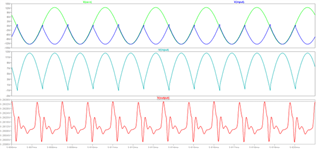Other Parts Discussed in Thread: OPA171
Tool/software:
Hi Team,
i am working on a problem , and i need your help to identify the approach.
1) info;- we are working on peak detector circuit as shown below, so here we are trying to find out the stability of the 1st Amplifier THS4082(U3),where the signal is injected.

2)info;- i have gone through the stability theory from TI precision lab, but most of them are for single stage amplifier, simple feedback loop and non inverting amplifier, in my case this is little complex as it involves two amplifier and feedback taken after 2nd buffer.
3) Query;- As per indirect method of finding stability, i wanted to understand for which point of circuit i should check the % overshoot OR gain peaking ??
4) Query:- if i used direct method where i should break the loop ,and what about 2nd amplifier buffer loop and for this type of circuit how we can get Aol*B curves??
5) info;- we are using LTspice for stability analysis.





